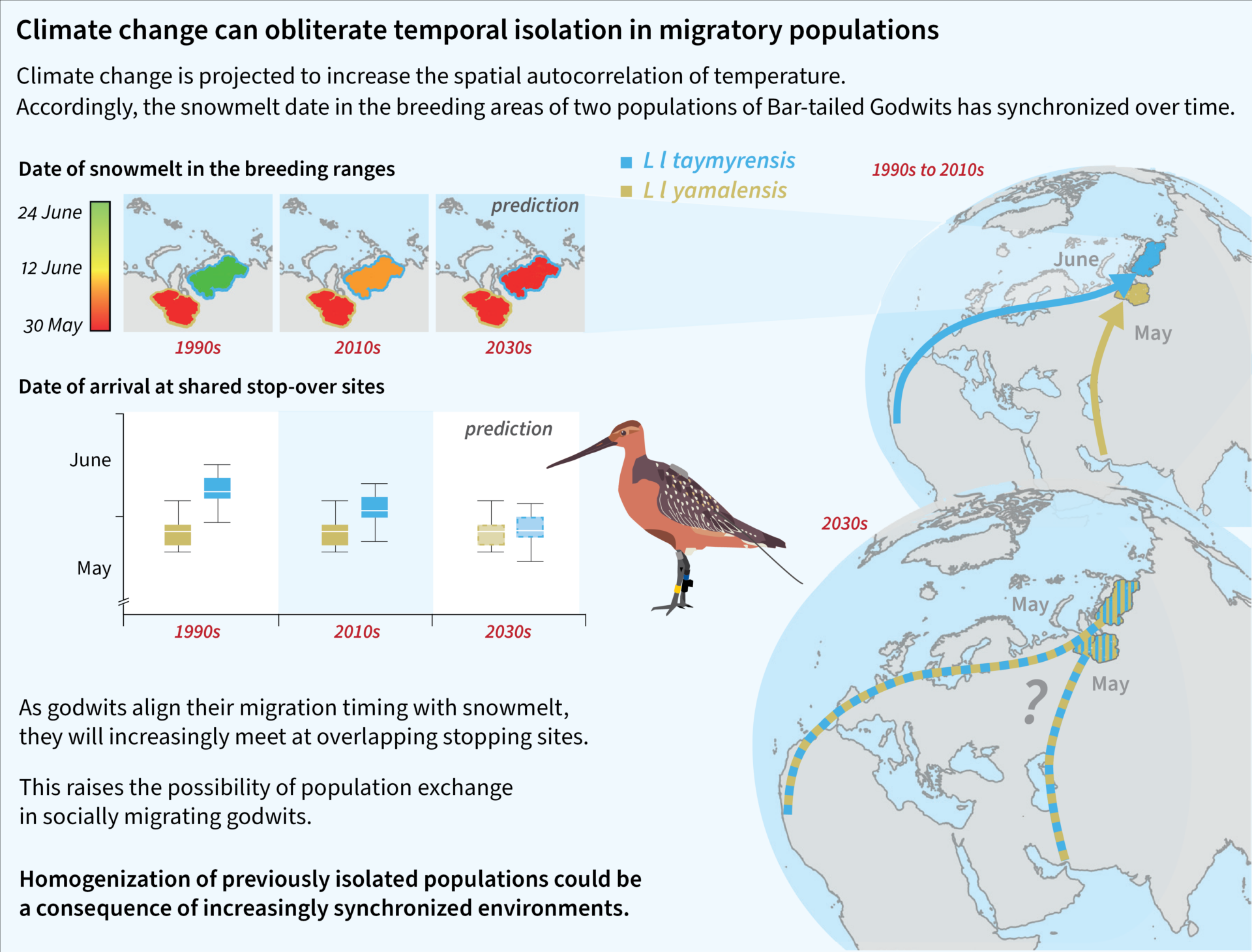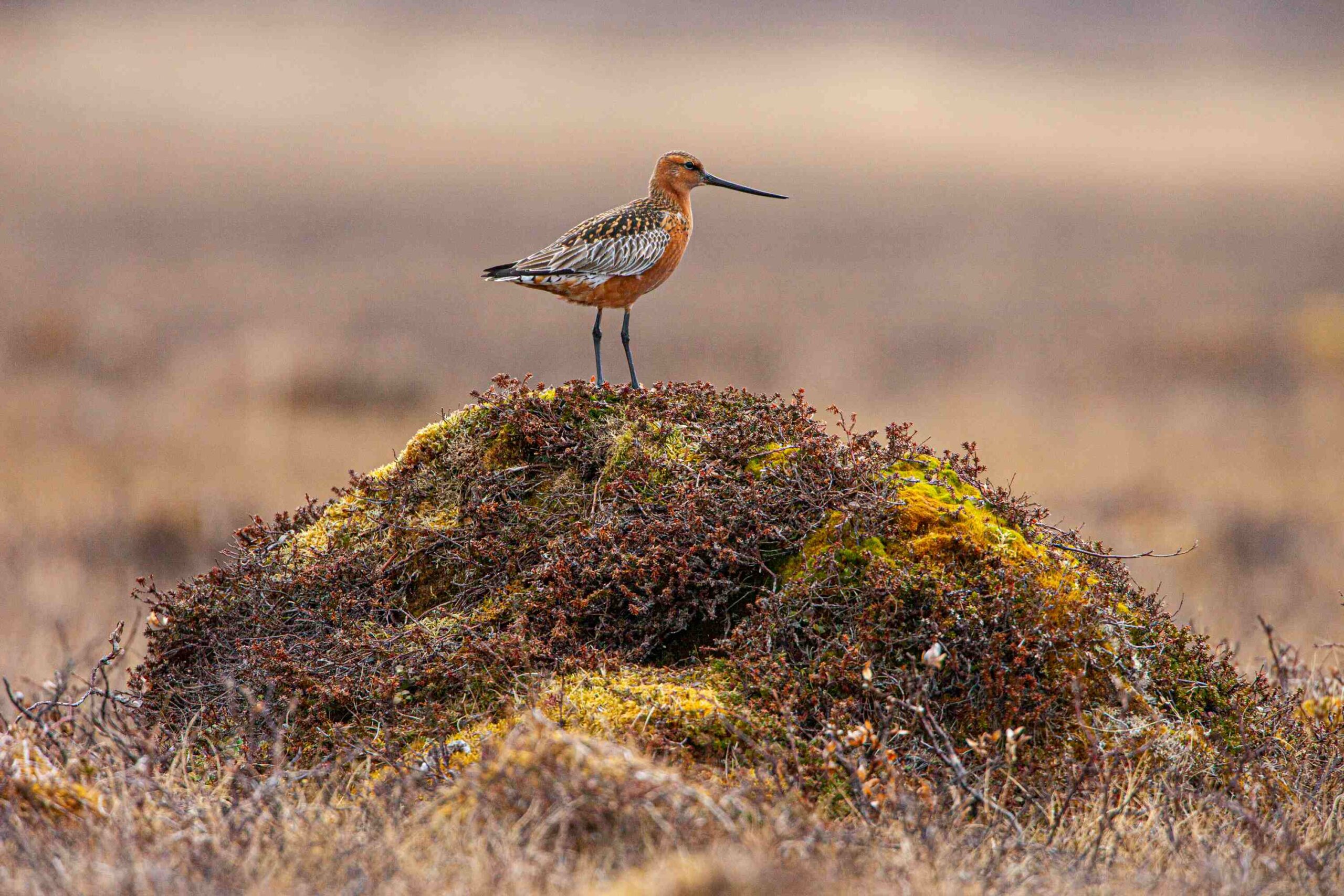Photo of a bar-tailed godwit by Jan van de Kam
by Roeland Bom
Changing climate may slowly erode the difference between two subspecies of the bar-tailed godwit. That warning is voiced by BirdEyes researchers Roeland Bom, Theunis Piersma, José Alves and Eldar Rakhimberdiev in Global Change Biology.
Global warming is predicted to make spatial and temporal global temperatures more homogeneous. Accordingly, the snowmelt data in the breeding areas of two populations of bar-tailed godwits, Limosa lapponica taymyrensis and L.l. yamalensis, has synchronized over time.
From birds that were fitted with satellite trackers we know that in both areas godwits normally arrive several days before the snow melts and that they have shared stopping sites at the tundra. In the past, the chance to meet at these shared sites was small because taymyrensis would arrive later than yamalensis. But nowadays, since godwits align their migration timing with snowmelt, they will increasingly meet at shared stopping sites. This raises the possibility of population exchange in this socially migrating bird. Since both subspecies can interbreed without difficulty, this would mean that the distinction between the subspecies would slowly disappear.
In a few decades, latitudinal differences in spring phenology will disappear for many more temporally isolated populations. This implies that, in addition to the rise in temperature and shift in phenology, one of the unexpected challenges posed by climate change is the homogenization of animal populations worldwide.




